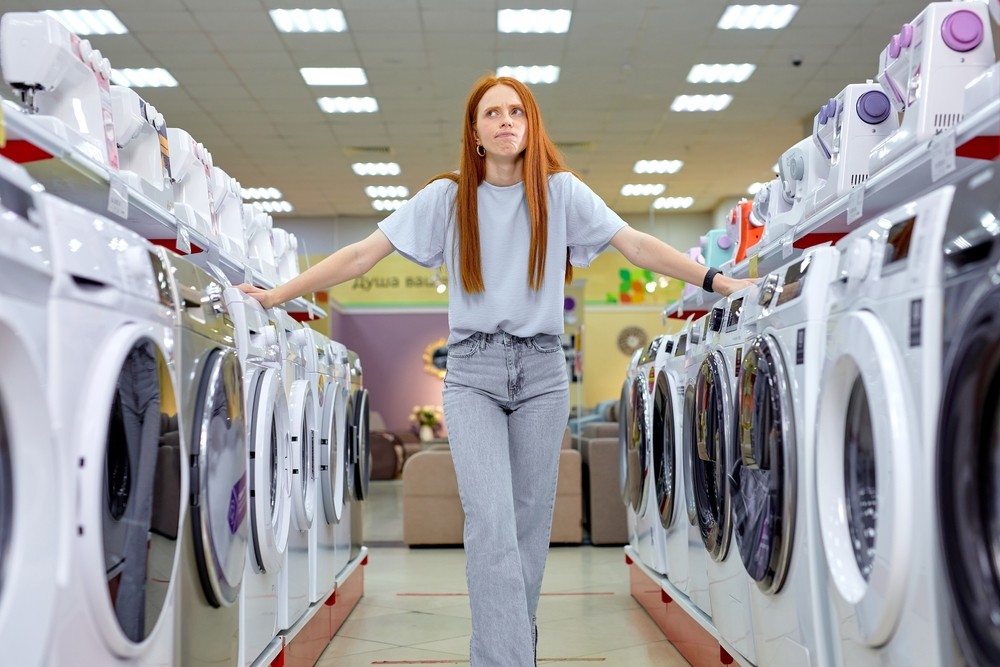The necessity for energy-efficient and water-conserving appliances is more critical than ever as global environmental concerns rise and energy costs fluctuate. Washing machines have undergone significant advancements, with manufacturers focusing on creating models that significantly decrease water and energy consumption while maintaining optimal washing performance. This transition marks a conscious shift towards sustainable living without compromising the quality of cleanliness and care for clothing.
The Environmental Impact of Traditional Washing Machines
Traditional washing machines consume substantial amounts of water and energy. Typically, a standard top-loading washing machine uses about 30 to 40 gallons of water per load. These machines also require a considerable amount of energy to heat water, agitate clothes, and complete each cycle. Consequently, this translates into a significant carbon footprint and increased utility bills, further straining both the environment and household budgets.
According to studies, household laundry accounts for a notable percentage of residential water usage, and older models contribute heavily to this statistic. This situation emphasizes the need for innovation that targets reduced consumption without penalizing washing performance. Fortunately, modern washing machines are answering this call effectively.
Advances in Washing Machine Technology
Recent technological developments have led to the creation of washing machines that drastically cut down on water and energy usage. These advancements not only cater to environmentally conscious consumers but also address the financial costs associated with appliance operation. Below are some key technologies and features that embody this transformation:
- Front-Loading Washers: These machines boast a design that inherently requires less water than traditional top-loading units. By tumbling clothes through a horizontal barrel, they achieve efficient washing with as little as 15 gallons per load, a substantial reduction from older models. Their design allows them to use gravity for agitation, reducing the need for energy-intensive motor operations.
- High-Efficiency (HE) Models: HE washing machines, identifiable by their distinct lack of a central agitator, provide enhanced performance with lower water usage. Utilizing a tumbling action similar to front-loading machines, these units adjust to different load sizes and clothing types through smart technology, automatically calibrating water and energy inputs to optimize the cleaning process.
- Smart Sensors: Modern washers often incorporate sensors that measure load weight and fabric type to adjust water levels and cycle length accordingly. This adaptive approach ensures that no excess resources are squandered, allowing for significant savings in both water and energy over the appliance’s lifetime.
- Steam Washing: Integrating steam into the washing cycle allows for deeper cleaning penetrations while using less water. The steam softens fabric fibers, making it easier for detergents to get rid of stains and dirt without the need for additional water or prolonged washing times.
- Cold Water Technology: Leveraging cold water washing has become increasingly popular as manufacturers develop detergent and washing technologies that perform exceptionally well at lower temperatures. This approach minimizes the energy required to heat the water, offering significant energy savings without sacrificing cleaning power.
Performance and Convenience
One of the primary concerns for consumers is whether these resource-efficient washing machines can match the performance standards set by traditional models. The transition to these new technologies does not mean a trade-off in cleaning quality. On the contrary, many of the features that contribute to lower resource use also enhance performance and convenience.
- Improved Fabric Care: Appliances designed with gentle washing capability ensure minimal wear and tear on garments. High-efficiency machines, for example, forego the aggressive agitation of older washers, preserving clothing quality and prolonging fabric lifespan.
- Advanced Cycle Options: Machines now offer a variety of cycle settings tailored to a range of fabric types and soil levels. Whether it’s a quick wash for lightly soiled items or a deep clean for heavily soiled clothes, these options provide flexibility and efficiency for any laundry need.
- Time-Saving Features: Enhanced spin cycles and water extraction capabilities mean that clothes come out drier, reducing the time and energy needed for drying. Some machines include quick-wash cycles specifically designed to efficiently clean small loads in a fraction of the time of standard cycles.
- Connectivity and Control: Many new models come equipped with smart technology, allowing users to control and monitor their machines remotely via smartphone apps. This feature not only offers convenience but also helps users track water and energy usage over time.
Cost and Long-Term Savings
While resource-efficient washing machines may come with a higher upfront price tag, their long-term savings can offset the initial investment. The reduction in water and electricity bills accumulated over months and years can be significant, depending on usage patterns and local utility rates. For example, the cost of heating water makes up around 90% of the energy required for a wash cycle, thus cold-water technology alone can lead to substantial savings.
Government incentives and rebates for purchasing energy-efficient appliances can further ease the initial cost. According to the Energy Star program, choosing qualifying machines can also make consumers eligible for certain rebates, rewarding investment in eco-friendly technologies.
Looking Ahead: The Growing Trend of Sustainable Appliances
As environmental awareness rises among consumers, the demand for sustainable appliances will likely increase as well. Manufacturers continue to innovate, exploring new technologies such as water recycling systems and machines that integrate with solar and other renewable energy sources. This evolving landscape of eco-friendly electronics is crucial in reducing domestic ecological impacts globally.
Consumers play an active role by choosing appliances that support a sustainable future, and in response, manufacturers are more motivated than ever to push the boundaries of environmentally conscious appliance design. This feedback loop is essential to driving the market toward even more innovative and sustainable solutions.
While washing machines with reduced water and energy footprints mark significant progress, the journey towards sustainability does not end there. As these technologies become more mainstream, consumers are encouraged to consider the lifecycle impact of their appliances, from production and transportation to usage and disposal. Opting for brands with transparent, environmentally conscious practices ensures that every aspect of the appliance’s life contributes positively to the planet.
Beyond buying energy-efficient machines, simple actions such as washing with full loads, utilizing shorter cycles, and sticking to cold washes can amplify environmental benefits. As these practices become more widespread and incorporated into everyday habits, consumers collectively contribute to significant conservation of resources.
Revolutionizing household appliances like washing machines symbolizes a broader cultural shift towards sustainability. These machines represent not simply a technical improvement but a conscientious choice for eco-friendly living that prioritizes future generations. By adopting and demanding these resource-efficient technologies, households can enjoy quality laundry care while actively participating in global efforts toward a more sustainable future.



